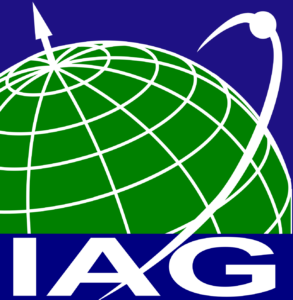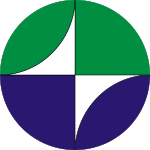JWG M.4: Realtime and post-processed kinematic GNSSpositioning: status and perspectives for seafloor and sea-surface positioning
Chair: Tianhe Xu (China)
Vice-Chair: Zhiguo Deng (Germany)
Affiliation: Commission 4
Terms of Reference
Global Navigation Satellite System (GNSS) is widely applied in seafloor and sea-surface positioning. For instance, GNSS installed in a buoy can be used to facilitate the measurement of sea surface wave and tidal height, calibration of satellite altimeters, estimation of precipitable water vapor, and even monitoring of tsunamis. Additionally, GNSS/Acoustic (GPS-A) techniques are commonly employed for hydrophone position during seismic exploration, seafloor geodetic positioning, monitoring oceanic platemotion, and studying earthquake cycle deformation, etc. Precise Point Positioning (PPP) is able to provide decimeter to centimeter-levelkinematic positioning accuracy worldwide by using precise GNSS ephemeris. This makes PPP a preferred GNSS positioning technology in ocean environments. International GNSS Service (IGS) has substantially generated precise products with certain delays. These products can be freely accessed for users to carry out post-processed PPP. In response to the real-time application demands, IGS introduced an open-access real-time service (RTS) in 2013, which includes orbit, clock, and other corrections. The advent of RTS allows users to carry out real-time PPP without paying any fees. However, challenges arise in receiving RTS corrections due to the lack of internet-based infrastructures in oceanic regions. Several commercial companies have developed real-time PPP systems, such as OmniStar, StarFire of NavCom, and StarFix of Fugro. In recent years, navigation satellite systems, such as QZSS, Beidou, and Galileo, have also been broadcasting PPP services. In addition, the applications of observable-specific signal bias and atmospheric correction for augmented PPP via Short Message Communication (SMC) or other methods have great potential. Nevertheless, the lower positioning accuracy and longer convergence time have always been a persistent issue for PPP, as compared to Real-time kinematic (RTK) positioning, particularly in the open ocean where there is no reference station network used to generate regional augmentation corrections. With the increasing deployment of unmanned intelligent systems in marine domains, in addition to high precision, high credibility has also been a key concern. The integrity monitoring server is the tool to ensure the positioning reliability and to obtain the protection level. However, methods, techniques, models, and algorithms for PPP integrity monitoring necessitate further development. This is the reason why it is worth focusing on the seafloor and sea-surface kinematic GNSS positioning within the ICCM.
Objectives
- To investigate the ocean environment influence on the kinematic GNSS PPPpositioning and to work out solutions to decrease environment influence;
- To encourage the development of methodology to accelerate PPP convergence inthe open ocean;
- To develop PPP integrity monitoring techniques to meet the increasing demands of unmanned intelligent systems;
- To promote international collaborations in seafloor and sea-surface kinematic GNSS positioning.
Program of Activities
- To encourage the seafloor and sea-surface kinematic GNSS data share amongscholars and academic societies.
- Organization of real-time and post-processed kinematic GNSS positioning for seafloor and sea-surface positioning symposia, and publication of special issues ofinternational journals such as Marine Geodesy and GPS Solutions.
Members
- Tianhe Xu (China); Chair
- Zhiguo Deng (Germany); Vice-Chair
- Zhixi Nie (China)
- Zhetao Zhang (China)



